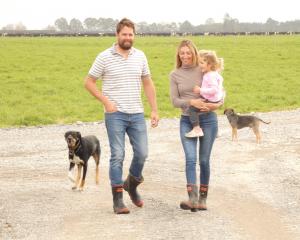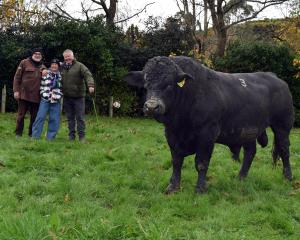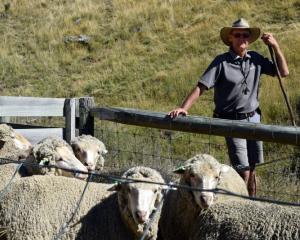
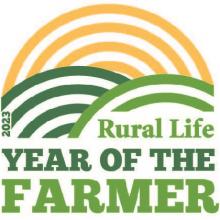
Rather than viewing the freshwater trio as a regulatory burden or a hindrance to farming, Tim Chamberlain and Rose Donaghy take pleasure in being their custodians.
Just as Harts Creek, Birdlings Brook and Spring Creek are part of the farm’s fabric, so too are the riparian native trees and shrubs inextricably linked to the way they farm the land.
Organically grown on the 180ha farm are vegetable seeds, fresh vegetables, specialist crops and Wiltshire sheep which are on-sold to wholesalers and retailers.
This light touch to the land extends to its natural charms.
Lake Ellesmere is only a small step away and they have done their best to make sure farm nutrients don’t go beyond the farm’s irrigated heavy soils and into feeding streams.
That is not the only reason why the family has invested so much time and money into returning the streams to a better state.
The sheer beauty of the habitats gives homes to aquatic ecosystems and other walks of life.
Before returning to the family farm, a young Mr Chamberlain worked with dogs and horses on large sheep and beef units.
For a while he struggled to see how he could detach himself from their "geographic beauty" and take up lowland farming on the flat.
"But we had these three creeks running through our farm and I wondered if we could create actual real beauty here. These are a bit of a pain in the neck really and they go through your farm and cut it up and make your paddocks not square. They have places where animals get in and die and I wondered if we could turn that all around to make havens of them."
The family wanted to turn around the way a previous farming era had treated them, he says.
"At the very worst side of it, they were sewage pipes. Our pigsty went directly into the creek and the dairy farm’s effluent would go directly into the creek off the milking sheds. We bought a bit of land in 1970 and there was a dairy farm just above us and it was flowing through beautifully crystal and clear and then all of a sudden it went green. I was wondering why it was going green when it suddenly dawned on me they were cleaning the dairy shed. So all that changed and had to change. It wasn’t just the farmers — most of the cities’ effluent went directly out to sea so it was a human being thing."
Mr Chamberlain says his father was uncomfortable with this and only too pleased to get out of pigs.
That’s not the only generational mindset which was to change at Harts Creek Farm.
Their son, George, is now on the fifth-generation farm which started when five Chamberlain brothers came out in the 1870s.
They originated from farming stock in Devon and bought a farm each in the area so the Chamberlain name remains a local farming name to this day.
The first Chamberlain landing at Harts Creek settled into mixed farming and growing, which continued through the generations.
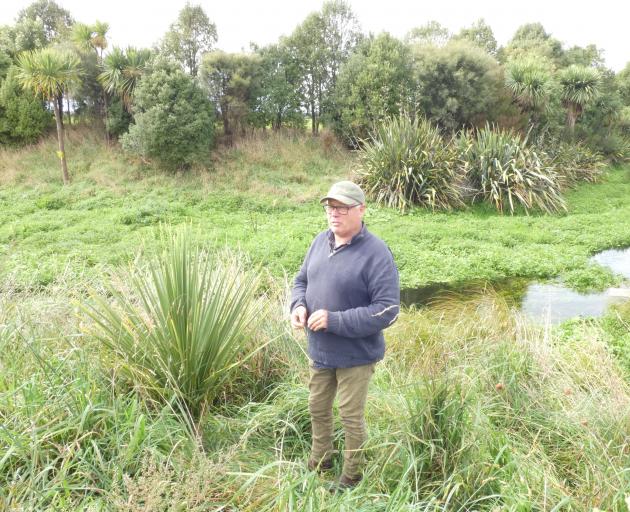
"I was 25 and had been overseas for three years with my girlfriend at the time, Rose. We got married and it was Rose who got me interested in the organic thing. And that’s what we’ve done for the past 40 years. I had no real contact with alternative thinking in agriculture and it was really Rose’s horror of what was going on to get crops in the way of pesticides and things and she got me around to good gardeners’ meetings. I can remember thinking I hope no one I have ever met or seen will ever know in the future that I was at these meetings."
In those days, organic growing had a crank stigma attached to it. It took a fair amount of convincing and many arguments later for Mr Chamberlain’s father, Peter, to agree. The 89-year-old only moved off the farm two years ago.
Mr Chamberlain senior had experienced the tail end of draught horses and had seen many changes, including the benefits of "chemistry" to farming.
Mr Chamberlain gives him credit for even listening to his headstrong son.
"It was getting quite tense really about how I should farm his farm with no money, management experience or history of anything. He said: ‘I’m going to think about this and I’m going away on a holiday by myself for three nights down to Central Otago’. He came back and knew what we were going to do."
A quarter of the farm went into organics in the hardest to irrigate part of the farm with his father continuing to be a conventional farmer on the rest. In five year’s time they would know what to do.
"It was the single best decision ever made on this farm in my time. I would’ve put the entire farm in organics and gone bust. There’s nothing sure of night following day as we didn’t have the infrastructure, the markets, the machinery or the understanding and skills. So it wasn’t long before he started saying the next paddock would make a good organic paddock and he became a real advocate. It wasn’t because he was worried about organics or being different, he didn’t want to go bankrupt for someone else’s ideals."
As early adopters, they found people were prepared to pay for organic produce and could deal closer to the market.
On the portion of farm set aside for conventional growing they continued with a simple rotation of snap-frozen peas and beans for Wattie’s and white clover for seed and feed and wheat for mainly milling. About 1000 ewes tied into the system and pigs were raised to bring in more income.
For the smaller organic operation, they initially grew the likes of wheat, oats, triticale and experimented with the likes of amaranthus.
As they became more adept at organic growing, Lincoln University’s biological husbandry lecturer Bob Crowder one day said "I think it is time I showed you how to grow organic onions", which led on to carrots and other vegetables.
The academic would often bring experts from around the world to his visits to the Chamberlain farm and they gained access to great organic minds.
By the five-year mark it was a done deal and they already had more than the agreed amount of the farm in organic crops.
Mr Chamberlain is happy to see organics become an accepted part of farming today and a far cry from the era when he harvested their first 1.6ha paddock of arrow wheat.
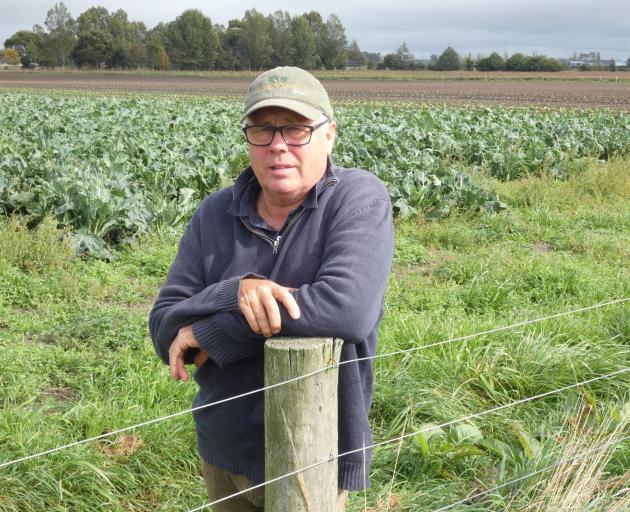
Written on the cardboard was "Don’t Panic, It’s Organic".
"Then he was taking a photo of it and he was almost in convulsions and I was horrified to think that anyone would see that sign and go past. I’ve still got a photo of it."
Fast forward to today and there are three main legs to the operation.
Fresh vegetables such as onions, carrots, brassicas and different types of pumpkins are organically grown and on-sold to box schemes and restaurants.
A small factory makes leaf powders for smoothie bases, while herbs are grown for drying. Echinacea is planted for its roots and once the crop seeds it is mowed, washed and dried. Fennel is another widely grown crop.
The wool-shedding Wiltshire ewes arrived 14 years ago and the Chamberlain’s have shares in a Wiltshire stud with a farmer they’ve been in business with for the same duration.
With crossbred wool prices remaining stubbornly low, he sees more farmers leaning towards the breed to reduce animal health and workload costs.
Rather than all their energy going into growing wool, the no-shear sheep can focus on a meaty carcass which is sold to New Zealand Organic Meats, he says.
The animals help nurture the soil with their effluent going back into soils topped up with compost. Spraying is restricted to micro nutrient applications and natural products such as BT (Bacillus thuringiensis) a fungus that kills caterpillars.
In 1999 they had completed the purchase of the farm from parents Peter and Betty. Mr Chamberlain senior carried on for the next 35 years, taking on many projects using wood from the plantings.
Initially, the creeks acted as natural fences for paddocks. When irrigators arrived it became sensible to square them up with fencing.
The transformation was a "slow-burn". Long before many farmers were doing this, a challenging streambank covered in gorse was put in native plants instead of being sprayed before the next paddock went into organics.
This coincided with his father bonding with a gardening enthusiast who progressed from working in the garden to on the farm and taking charge of the trees.
For 30 years he fenced riparian strips and planted native and small woodlot trees on the farm. A botany report gave them direction for the riparian planting of pre-European species including larger totara, matai, and kahikatea as well as kauri for "some fun".

Clear-flowing water is the reward of this foresight. DNA monitoring carried out by the Ellesmere Sustainable Agriculture (ESA) group on Harts Creek and the other lowland streams has shown a long list of trout, koura, longfin and shortfin eels and other life forms — some of which are seldom seen, such as lampreys. Mr Chamberlain has only seen the elusive fish once in his time at Harts Creek Farm, but they are there. The call of a bellbird was once a rarity and now they are year-round. Wading birds have made the shaded waterways their homes.
Native shrubs on the streams’ flanks absorb up-stream nitrogen flowing down and from the springs.
These are the trade-offs for large populations of nuisance finches and sparrows attracted to the habitats and making inroads in yields by dining on growing oil seed crops.
Pleasing for him is that neighbouring farmers are making the same stand.
A Harts Creek Stream Care group has been a striking success with almost all of the 13 farmers on the creek getting involved in planting projects.
Mr Chamberlain is chairman of the wider ESA group that has about 15 lowland streams within its boundary.
Initially at its inception 20 years ago ESA was a water users’ group as it became obvious that farmers needed help navigating through regulatory changes to consents around lowland streams. It has morphed into its current version after the group tired of fighting regulations and wanted to do something more positive.
One of the members fired off a snotty letter to Agriculture Minister Damien O’Connor calling for support rather than pouring dictates down their throats. The minister replied by giving them a list of funding options.
The group applied successfully for $1.2 million, which grew with nature funding to $3.6 million.
Project manager David Hewson has worked with his team and contractors to establish 53 restoration projects over the 15 lowland streams in the catchment.
Mr Chamberlain says farmers have thousands of jobs to do and riparian tree planting often falls by the wayside, but with this initiative they pay 25%-30% of the cost and the work gets done along with three years of maintenance.
"I imagine this will carry on because once you get the momentum going it is somehow easier for people to follow. I would really love that there was enough money washing around farming that we could do this ourselves. I always thought ‘why aren’t farmers doing it themselves’, but then I thought if they are things of beauty then they are things of beauty for the community and they just happen to flow through a few farmers’ farms. So it is a fair enough thing for the community to put some money in to enhance these waterways the way they would like them enhanced."
In the years ahead, Mr Chamberlain has bought a pilothouse ketch and plans to spend more time on the water and less on the land.
He is content to pass on the day-to-day running of the farm to George, knowing the next generation of Chamberlains can carry on the organics legacy.


